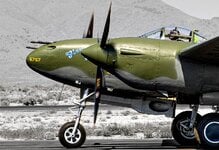Definitive statement from another thread:
("one" = fighter)
Care to elaborate?
But the most effective one ever to actually serve was the P-38. For a whole host of other reasons!
("one" = fighter)
Care to elaborate?

